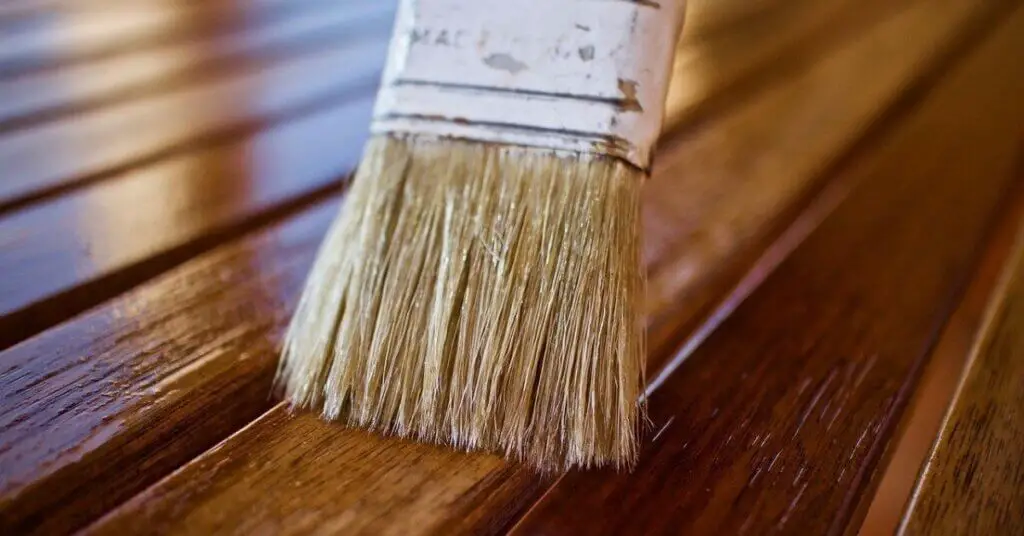What is Ash wood?
Ash wood is a strong, durable, stable, shock-resistant hardwood native to eastern and central North America. It is one of the most popular hardwoods, widely used for fine furniture making, flooring, cabinetry, and building construction.
Ash wood is not naturally rot-resistant; it tends to rot due to constant exposure to moisture and weather. Therefore, it is not recommended for an outdoor environment.
Ash wood is a hardy species but can be easily worked with. Its straight and regular grain helps during the work.
| # | Ash Wood |
| Scientific name | Fraxinus |
| Janka Hardness (White Ash) | 1,320 lbf (5,900 N) |
| Tree Height | 30 to 35 meters. |
| Color (White Ash) | light to medium brown color |
| Bark Color | Pale brown to gray |
| Workability | Easy to work |
| Availability | Easily available and affordable |
| Durability | Durable for interior application, but not for the exterior. |
Ash Wood Advantages and Disadvantages
Ash wood is a great species but it has its own disadvantages and advantages. It has some limitations which needs to be known before using it.
Advantages
- Appearance: Generally, Ash Wood has a straight and regular grain, which gives a uniform and fine texture to the furniture. It gives an excellent appearance after finishing.
- Workability: Ash is relatively dense with good working and finishing properties. Its Janka hardness is moderate. Therefore it holds the nail, screw, paint, and polish well. Responds well to steam bending.
- Versatile: Ash Wood is a versatile hardwood. It is used to make furniture, smoke, toys, and sports parts.
- Shock Resistant: Ash wood has the ability to resist shock. Therefore it is the most suitable wood for tool handles, furniture, roof construction, and flooring.
- Durability: It is one of the most durable varieties and has been used in the United States for hundreds of years. It requires less care than other hardwoods.
- Affordable and availability: Ash wood is widely available around the world. Ash wood is inexpensive compared to other hardwoods. The demand for ash wood can be easily met in its bulk.
- Easy to maintain: Ash is easier to maintain than any other hardwood. If it is used indoors, it is extremely durable with maintenance.
Disadvantage
- Open Grain: Ash wood has open pores which makes the surface look rough. To get a smooth and fine surface, these pores have to be filled.
- Not exterior uses: Ash wood is not recommended for use outdoors. It is susceptible to attack by insects and fungi after exposure to moisture and water.
- Easily Split: Ash splits very easily when the deal and screw are applied. Hence pre-drilling is required.
Uses of Ash Wood
Ash Wood is widely used for making furniture, flooring, doors, cabinetry, architectural molding, millwork, tool handles, sports parts, turnings, and many more. Ash wood is a versatile wood species that can be used for all applications that are not exposed to moisture and water.
It is an excellent choice for durable flooring because ash wood is hard and less prone to scratches and dents. Ash wood has extreme shock-resistant properties, which makes it a suitable wood for a baseball bats, hockey sticks, and tool handles.
Ash wood can be used for outdoor purposes but is not suitable. It is extremely durable and stable but not resistant to insect attack. So it needs proper exterior finishing and sealing.
Ash wood can be easily handled, and it is not too expensive, so it is used for making boxes/crates, food containers, and decorative items.
Ash wood Appearance
Generally, the color of ash wood is light to dark brown, while sapwood is white to light brown. The heartwood color of Ash Wood gets darker over time. This color change process occurs with exposure to UV light and oxygen.
Ash wood has a straight and regular grain pattern. Sometimes, wavy patterns can also be there. Ash wood is an open pore wood that results in a rough texture on the surface of the wood.
Working with Ash Wood
Ash wood is very easy to work with by hand and with machine tools. It finishes well and responds well to steam bending. Its straight and regular grain allows the tools to carve, cut, and split.
Avoid using green ash or damp wood to get a good working experience. The density of ash wood is medium, so its weight is heavier than many softwoods. Ash wood holds nails and screws well.
Can you stain Ash wood?

Yes, Ash wood absorbs stains well and evenly. Ash wood has open pores, so it absorbs the stain evenly over the entire surface and does not create blotchy stains. After proper staining, it enhances the beautiful grain and texture.
Ash wood naturally has a light brown color, so it’s important to select a stain product that complements its hue. Oil-based Gel Stain is a popular choice for staining ash wood.
Does Ash Wood Need Wood Conditioner Before Staining?
Pre-stain wood conditioners are mainly used to deal with blotchy stains. Ash wood stains well and evenly throughout the wood without the use of any wood conditioner. Therefore, ash wood does not require a wood conditioner before staining.
Pre-stain wood conditioner seals the open pores of ash wood and reduces the amount of stain the large pores will absorb. It also creates a much more uniform stain coat.
FAQs about Ash Wood
Is Ash Wood Water Resistant?
Ash wood is not waterproof or weatherproof. Its open pores absorb moisture, and the wood expands and warps, creating structural problems. Properly sealed or pressure-treated wood that can deal with moisture and insects.
We know that no wood can be truly waterproof or waterproof. But yes, some wood species perform well in moisture for a long time, which have natural rot-resistant and insect-resistant properties.
Is Ash Wood Good to Burn?
Ash wood is a great firewood, because it burns clean, burns easily and generates high heat. It is also easy to cut and split. White Ash has a BTU value of 23.6 million BTUs per cord, which is sufficient to generate a good amount of heat.
BTUs (British thermal units) is a unit of heat. It is defined as the amount of heat required to raise the temperature of one pound of water by one degree Fahrenheit.
The BTUs value of wood species is as follows.
| Wood Species name | BTU’s per Cord |
| Oak, White | 24.0 |
| Ash, White | 23.6 |
| Ash, Green | 19.9 |
| Ash, Black | 18.7 |
| Maple, Red | 18.1 |
How Hard is Ash Wood?
Ash wood is a hardwood species; its density is high, so it is a hard and heavy wood. So it is resistant to scratches and dents. There are many species of Ash wood whose hardness is different from each other.
The Red Ash is one of the hardest species in the ash family, with a Junk hardness value of 1,890 lbf (8,400 N). Meanwhile, the Janka hardness value of white ash is 1,320 lbf (5,870 N).
Can You Smoke With Ash Wood?
Ash wood is the most commonly used for smoking meat, it is one of the perfect wood for any meat. Ash wood gives a mild smoke flavor. It burns clean with perfect heat.
Ash wood contains very low amounts of moisture, so it season’s rapidly and dries fast.
Can You Burn Ash Wood Green?
Green ash wood can be burned because it contains less moisture. But Ash wood burns better when seasoned. Green Ash Wood does not generate much heat, and it has an Ash Borer, which sticks to your chimney while burning.
How long does ash wood need to season?
By the way, seasoning is a natural process that depends on the weather. If the green ash tree is protected from moisture and soil contact, the process of seasoning ash takes 6 to 18 months.
Conclusion
Ash wood is a beautiful wood species that is most commonly used for making fine furniture. It is one of the popular hardwoods that can be easily worked with.


Comments are closed.